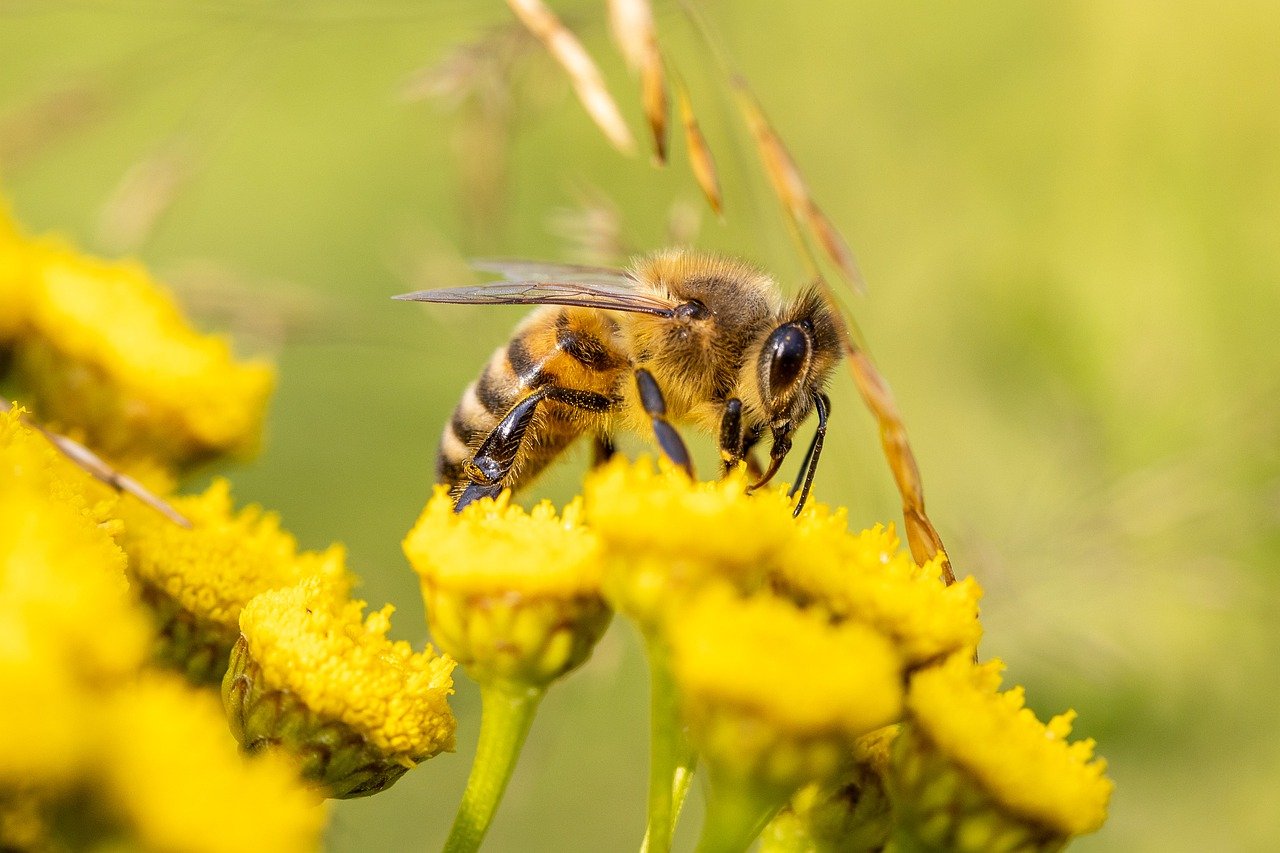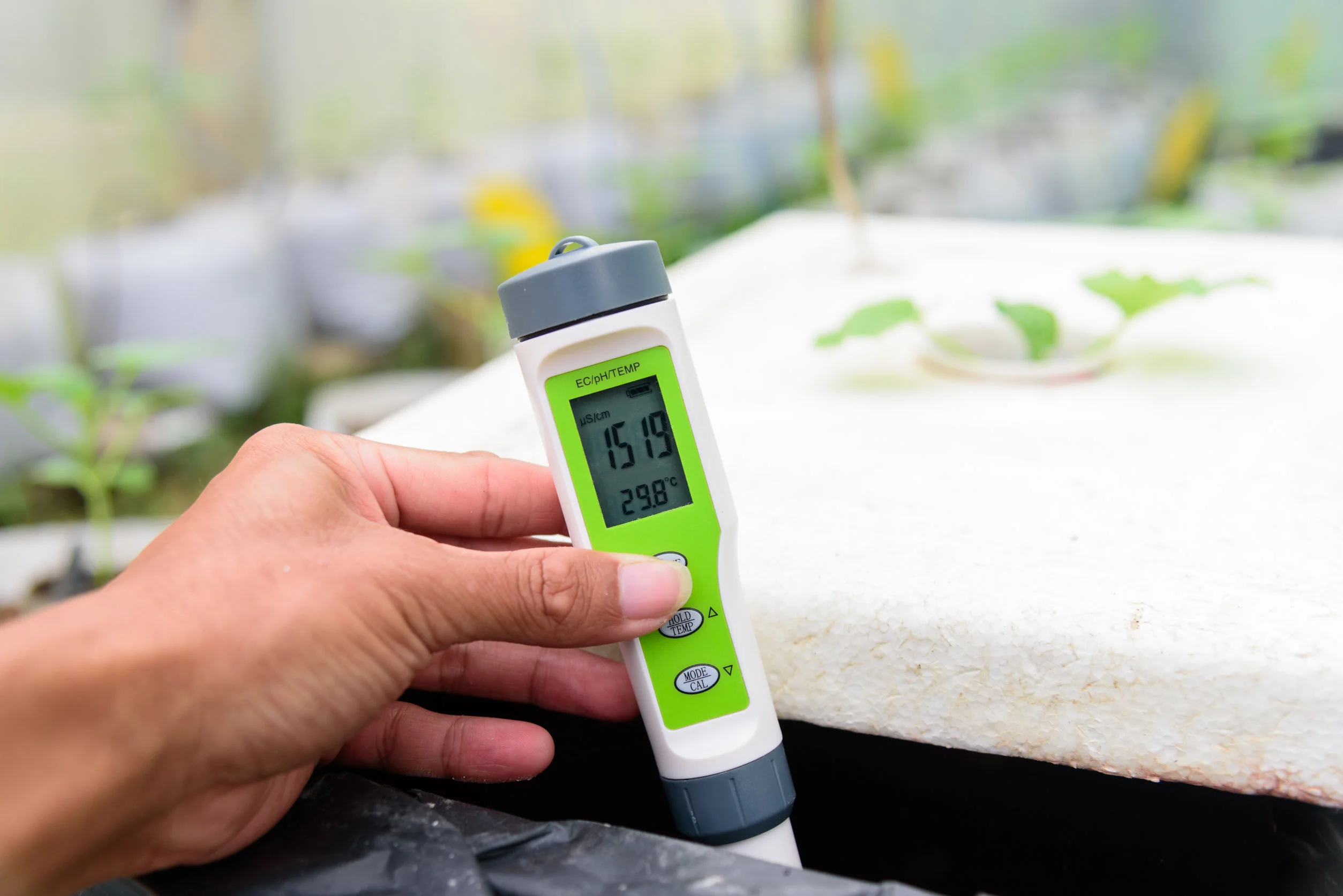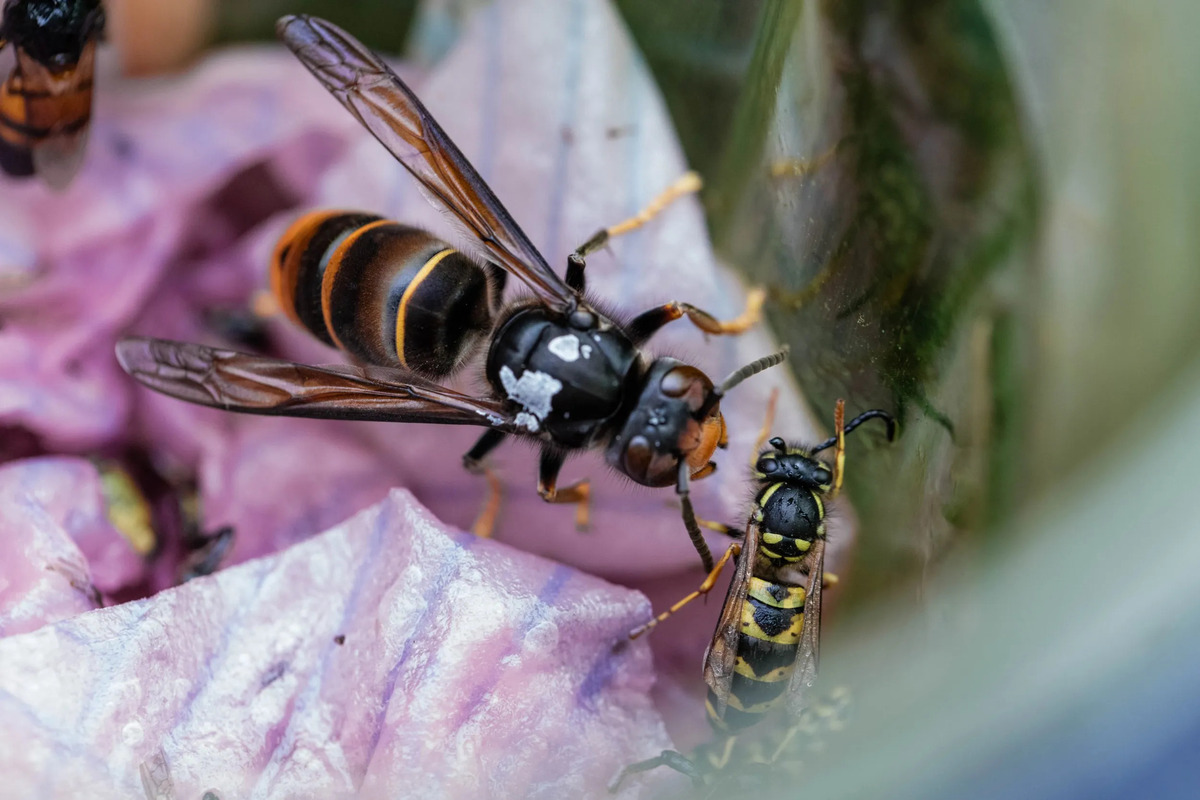Home>Gardening News and Trends>Latest News>Why Are Bees Important Insects


Latest News
Why Are Bees Important Insects
Published: December 11, 2023
Discover the Latest News on Why Bees Are Important Insects. Explore their vital role in pollination, ecosystem balance, and honey production. Learn more now!
(Many of the links in this article redirect to a specific reviewed product. Your purchase of these products through affiliate links helps to generate commission for Chicagolandgardening.com, at no extra cost. Learn more)
Table of Contents
Introduction
Bees are often buzzing, colorful, and hardworking insects that are essential for the survival of various ecosystems and the well-being of our planet. They play a crucial role in pollination, which is the process of transferring pollen from the male part of a flower to the female part, resulting in the fertilization and successful reproduction of countless plant species.
Bees are not only important for the production of fruits, vegetables, and nuts that we consume, but they are also vital for the diversity and health of natural habitats. The decline in bee populations, due to various threats, has raised concerns about the potential impact on global food security and the stability of ecosystems.
In this article, we will explore the significant role that bees play in pollination and the reasons why they are essential insects. We will also discuss the economic significance of bees, their role as indicators of environmental health, the threats they are facing, and the conservation efforts needed to protect these valuable insects.
Understanding the importance of bees and taking action to conserve their populations is crucial for maintaining the balance of our ecosystems and ensuring a sustainable future. So, let’s dive in and explore the incredible world of these tiny yet mighty creatures.
The Role of Bees in Pollination
Pollination is a vital process that allows plants to reproduce and produce seeds, ensuring the continuation of plant species. Bees are critical players in this process, acting as pollinators for a wide variety of flowering plants, including crops, wildflowers, and trees.
When bees visit flowers in search of nectar and pollen, small grains of pollen stick to their bodies and are transferred from the male part (stamen) to the female part (pistil) of other flowers they visit. This transfer of pollen is known as cross-pollination and is essential for fertilization and the production of fruits and seeds.
Bees are uniquely adapted for pollination. As they forage for nectar, their fuzzy bodies collect large amounts of pollen. Additionally, their behavior, such as flying from flower to flower in search of food, increases the likelihood of successful pollination.
The efficiency of bees as pollinators is unmatched. It is estimated that they contribute to the pollination of around 75% of all flowering plants and 35% of the world’s food crops. Without bees, many plants would be unable to reproduce, leading to a decline in biodiversity and a significant impact on food production.
Certain plants have even evolved specific adaptations to attract bees. They produce brightly colored flowers, scent-rich nectar, and landing platforms that make it easy for bees to locate and access the precious resources they provide. In turn, bees rely on these floral rewards for their own survival and energy needs.
Not only do bees contribute to the reproduction and diversity of plants, but they also play a crucial role in improving crop yields. Many agriculturally important crops, including apples, almonds, and tomatoes, depend on bees for effective pollination. The presence of bees can significantly increase crop quality and quantity, enhancing the productivity of farmers and ensuring a more abundant food supply.
In summary, the role of bees in pollination is vital for the successful reproduction of plant species and the production of fruits and seeds. Their unique adaptations and behavior make them highly efficient pollinators, contributing to the biodiversity of our ecosystems and the productivity of agricultural systems.
Importance of Bees for Ecosystems
Bees are not only essential for the pollination of plants but also play a significant role in maintaining the balance and sustainability of ecosystems. Their presence has a profound impact on various aspects of a healthy environment.
One of the key contributions of bees to ecosystems is their role in promoting biodiversity. By pollinating a wide range of plant species, they facilitate the reproduction of diverse plant populations, leading to the establishment and maintenance of rich and resilient habitats. This, in turn, supports other organisms that depend on these plants for food, shelter, and breeding.
Bees also play a crucial role in the food chain. As pollinators, they ensure the production of fruits, seeds, and nuts, which serve as a food source for numerous animals, including birds, rodents, and other insects. The presence of bees in an ecosystem helps to stabilize food webs and maintain the population dynamics of various species.
Furthermore, some bee species, such as bumblebees, are important for the pollination of wildflowers. These flowers provide crucial habitat and food sources for other insects and wildlife, contributing to the overall health and biodiversity of natural ecosystems. Without bees, these plants and the animals that depend on them would face severe challenges.
In addition to their role in pollination, bees also contribute to soil fertility. Certain species of bees, such as solitary ground-nesting bees and leafcutter bees, are efficient pollinators of leguminous plants. These plants have the ability to fix nitrogen from the atmosphere, enriching the soil and promoting plant growth. The activities of bees in pollination therefore indirectly enhance the nutrient cycling and health of ecosystems.
Aside from their ecosystem services, the presence of bees also brings beauty and joy to the natural world. Their vibrant colors and buzzing wings add to the wonder and enchantment of outdoor spaces, attracting attention and admiration from humans and other creatures alike.
In summary, the importance of bees for ecosystems cannot be overstated. Their role in promoting biodiversity, stabilizing food chains, maintaining habitat quality, and enhancing soil fertility highlights the intricate interconnections between bees and the overall health of our natural world. Protecting and conserving bee populations is vital for the sustainability and resilience of ecosystems globally.
Bees as Indicators of Environmental Health
Bees are not only important for pollination and ecosystem stability but also serve as crucial indicators of environmental health. The health and abundance of bee populations can reflect the overall state of their habitat and the surrounding ecosystem.
One way in which bees act as indicators is through their sensitivity to changes in the environment. Bees are known to be highly sensitive to pesticides, pollutants, and habitat degradation. If bee populations decline or exhibit signs of stress, it can be a warning sign of environmental issues that may also be affecting other organisms in the ecosystem.
Furthermore, the diversity and abundance of bee species in an area can serve as an indicator of habitat quality. Bees have specific habitat requirements, such as the availability of suitable nesting sites and a diverse range of flowering plant species. If bee populations are declining or certain species are disappearing from an area, it suggests that the habitat may be compromised and unable to support these essential pollinators.
Bees can also provide valuable information about the impact of climate change on ecosystems. Changes in temperature, rainfall patterns, and flowering times can affect the synchrony between bees and the plants they rely on for food. Disruptions in this timing can lead to a mismatch between bees and their preferred food sources, jeopardizing their survival and the pollination services they provide.
Monitoring bee populations and studying their behavior and health can provide scientists with insights into the overall health and resiliency of ecosystems. By understanding the threats faced by bees and the factors influencing their populations, researchers can identify broader environmental issues and work towards mitigating harmful impacts.
Additionally, the decline of bee populations can have cascading effects on other organisms in the ecosystem. If bees are unable to adequately pollinate plants, it can lead to reduced fruit and seed production, affecting the availability of food for other wildlife. This disruption can disrupt the delicate balance and functioning of the ecosystem as a whole.
In summary, bees serve as vital indicators of environmental health. Their sensitivity to changes in their habitat, pesticide exposure, and climate influences make them valuable sentinels for the overall well-being of ecosystems. Monitoring and protecting bee populations can provide valuable insights into the status of our environment and help guide conservation efforts.
Economic Significance of Bees
Besides their ecological importance, bees also hold significant economic value. The services provided by bees, particularly their role in pollination, have a direct impact on agriculture, food production, and the economy as a whole.
One of the most notable contributions of bees is their role in pollinating crops. Many commercially important crops, including fruits, vegetables, and nuts, rely on bees for their successful pollination. Without bees, the yields and quality of these crops would significantly decline, leading to economic losses for farmers and potential food shortages for consumers.
In fact, the economic value of pollination services provided by bees has been estimated to be in the billions of dollars globally. The value of crop pollination by bees has been highlighted in studies that quantify the increased yields and market value of crops due to bee pollination.
Beyond crop pollination, bees also contribute to the production of honey, beeswax, and other hive products. Beekeeping is an important economic activity in many regions, providing income and employment opportunities for beekeepers and associated industries. The demand for honey and other bee products continues to grow, both domestically and internationally, further highlighting the economic significance of bees.
Moreover, bees indirectly support other industries such as the production of natural fibers like cotton and the cultivation of medicinal plants. Bees play a crucial role in the pollination of plants used for herbal remedies, cosmetics, and essential oils, contributing to the thriving market for these products.
The economic impact of a decline in bee populations extends beyond agriculture. As mentioned earlier, bees are important indicators of environmental health. Their decline could signal the presence of harmful pollutants and environmental degradation, which can have far-reaching economic consequences. The loss of healthy ecosystems can disrupt services essential for human well-being, such as clean water, air purification, and natural pest control.
In summary, the economic significance of bees cannot be overlooked. From crop pollination to the production of hive products and their role in supporting other industries, bees contribute to economic growth and stability. Recognizing the value of bees and investing in their conservation not only benefits the environment but also supports sustainable agriculture and livelihoods.
Threats to Bee Populations
Bee populations worldwide are facing numerous threats, which have led to declines in their numbers and overall health. These threats pose significant challenges to the well-being and survival of bees and have far-reaching implications for ecosystems and food production.
One of the primary threats to bees is habitat loss and degradation. The destruction of natural habitats for agriculture, urbanization, and industrial development reduces the availability of suitable nesting sites and the diversity of flowering plants that bees rely on for nectar and pollen. Without diverse and healthy habitats, bee populations struggle to find food and suitable locations to establish their colonies.
Another major threat to bees is the use of pesticides, particularly neonicotinoids. These systemic insecticides, commonly used in agriculture, can have harmful effects on bees. Pesticides can contaminate pollen and nectar, leading to direct poisoning or impairing bee health by weakening their immune systems, navigation abilities, and reproductive capabilities. Exposure to pesticides can result in bee mortality and overall population declines.
Climate change is also emerging as a significant threat to bee populations. Rising temperatures, alterations in precipitation patterns, and shifting seasons can disrupt the synchrony between bees and the flowering plants they depend on. These changes can lead to mismatches in timing, with bees struggling to find sufficient food sources when they need them the most. Climate change can also make bees more susceptible to diseases and parasites that thrive in warmer conditions.
Another critical threat to bees is the presence of diseases and parasites, particularly varroa mites. These external parasitic mites can infest honeybee colonies, weakening and ultimately killing the bees. In addition, the spread of diseases among bee populations can be facilitated by the movement of hives across regions and continents for agricultural pollination purposes.
Furthermore, the presence of invasive species can pose challenges to native bee populations. Invasive plants may outcompete native floral resources, reducing the availability of food for bees. Invasive bee species can also disrupt ecosystems by competing for resources with native bees, potentially leading to declines in native bee populations.
In summary, bee populations face multiple threats including habitat loss, pesticide exposure, climate change, diseases, parasites, and invasive species. These threats, individually or in combination, can have profound impacts on bee health and survival. Addressing these challenges is crucial for the conservation and protection of bees, as well as the sustainability of ecosystems and food production systems that rely on their pollination services.
Conservation and Protection Efforts for Bees
Recognizing the critical importance of bees and the threats facing their populations, numerous conservation and protection efforts have been implemented to support their well-being and ensure their survival. These initiatives involve various stakeholders, including governments, organizations, researchers, and communities.
One approach to conserving bees is the establishment and preservation of protected areas and wildlife corridors. These areas provide undisturbed habitat for bees to nest and forage, allowing them to thrive and maintain healthy populations. Additionally, the promotion of sustainable land management practices, such as reducing pesticide use and preserving natural vegetation, helps create suitable habitats for bees.
Efforts to raise awareness and educate the public about the importance of bees are also significant. Educating individuals, communities, and farmers about the vital role bees play in pollination and the impact of their decline can foster a sense of stewardship for these essential insects. This awareness can lead to changes in behavior and practices that benefit bee populations and their habitats.
Government policies and regulations have an essential role to play in bee conservation. Implementing and enforcing restrictions on harmful pesticides, particularly those linked to bee decline, can significantly reduce the exposure of bees to these chemicals. Supporting sustainable agricultural practices, such as organic farming and integrated pest management, can also protect bees and their habitats.
Collaboration between researchers and beekeepers is essential for understanding the threats facing bee populations and developing effective mitigation strategies. Scientists and beekeepers work together to monitor and study bee health, behavior, and population trends. This research helps identify factors contributing to bee decline and informs the development of best practices for beekeeping and habitat management.
Furthermore, initiatives to conserve and promote the planting of bee-friendly native plants and wildflowers can provide essential forage resources for bees. Creating pollinator-friendly gardens and urban green spaces not only contribute to bee conservation but also provide opportunities for people to connect with nature and support local biodiversity.
Lastly, individual actions can also make a difference in bee conservation. Planting pollinator-friendly gardens, avoiding the use of harmful pesticides in personal gardens, and providing nesting opportunities for bees, such as bee hotels, can create small but meaningful habitats for these insects.
In summary, conservation and protection efforts for bees involve a range of strategies including habitat preservation, public awareness and education, government policies, research initiatives, and individual actions. Emphasizing the importance of bees and implementing these measures are vital to supporting thriving bee populations, ensuring the sustainability of ecosystems, and securing our food supply.
Conclusion
Bees, with their essential role in pollination, are crucial insects that contribute to the ecological balance, biodiversity, and economic stability of our planet. Their ability to transfer pollen from flower to flower is vital for the reproduction of countless plant species, including many crops that are vital for our food supply.
Aside from their role as pollinators, bees also serve as indicators of environmental health. Their sensitivity to changes in their habitats, pesticide exposure, and climate influences make them valuable sentinels for the overall well-being of ecosystems. Monitoring and protecting bee populations can provide valuable insights into the status of our environment and help guide conservation efforts.
Unfortunately, bee populations face numerous threats, such as habitat loss, pesticide exposure, climate change, diseases, parasites, and invasive species. These challenges pose significant risks to the health and survival of bees, and therefore, to the stability of ecosystems and the agricultural systems that rely on their pollination services.
Thankfully, there are concerted efforts being made to conserve and protect bees. These efforts involve the establishment of protected areas, education and awareness campaigns, government policies and regulations, research initiatives, and individual actions. By participating in these efforts, we can support thriving bee populations and contribute to the sustainability and resilience of our ecosystems.
Recognizing and appreciating the importance of bees is crucial for a sustainable future. Whether we are farmers, gardeners, policymakers, or individuals, we can all play a part in protecting and conserving bees. By taking action to create bee-friendly habitats, using sustainable agricultural practices, and reducing our use of harmful pesticides, we can ensure that bees continue to thrive and fulfill their vital role in the ecosystems on which we all depend.
Let us embrace the incredible and irreplaceable contributions of bees and work together to safeguard these important insects for the benefit of the planet and future generations.






